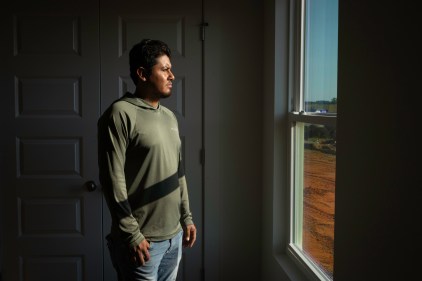ProPublica, with The New York Times Magazine and funded by the Pulitzer Center, hired geographer Bryan Jones at Baruch College to build an extended version of a climate migration model that Jones had done with the World Bank for its 2018 report, “Groundswell.” The model aims to understand how climate change might lead to population shifts in Central America and Mexico, including how people may move across borders between these countries and to the United States.
Jones’ work considers five specific plausible socioeconomic and climate scenarios for the future, which makes it possible to examine the relative importance of different climate and societal futures in terms of their influence in driving migration. The scenarios take into account standard versions of global socioeconomic development — including border management, GDP growth and trade — used by the United Nations scientists, combined with levels of future atmospheric global carbon concentrations also standardized by global climate scientists.
- An optimistic/reference scenario, in which climate impacts are rapidly reduced on a global scale and there is regional convergence toward higher levels of development across Central America and Mexico.
- A pessimistic scenario, in which climate change impacts are on the high end of current plausible scenarios and significant challenges to socioeconomic development exist throughout the region, exacerbating the gap between Central America and the United States.
- A more climate-friendly scenario, which pairs a less-extreme climate outcome with the same challenging socioeconomic future as the pessimistic scenario.
- A more development-friendly scenario, which follows the pessimistic climate future but assumes a more inclusive development pathway in which regional economic growth occurs quickly.
- A moderate scenario, in which socioeconomic development occurs rapidly throughout the region accompanied by a moderate level of climate change.
Read More
Read More
As a part of our own evaluation of the statistical work that Jones performed, ProPublica and the Times sought feedback from eight leading scientists in the field to help us evaluate the methods and data built into the modeling, and to better understand the model’s limitations.
Their feedback has been incorporated into the methodology, which provides more technical detail on the modeling effort. That document describes and addresses the limitations of the modeling process and some of the concerns raised by our reviewers, which include both technical criticisms and questions about how the findings would be presented. Among the questions raised were whether there is sufficient data and evidence to support all of the causal effects modeled and whether the work would lend a false sense of precision given the uncertainties inherent in the process. These experts also cautioned that it will be difficult to know how the causal relationships assumed in the model would change over time, and that nonlinear change can’t be predicted or represented well in trained models, but is likely to occur. Most said the modeling offered a valuable tool for envisioning the broad trajectory of future climate effects on migration and was useful for the distinctions it helps to draw between broad categories of policy response.
The modeling effort, as well as the feedback, also informed our findings and storytelling. We viewed the modeling work as showing possible general pathways for the future, rather than as concrete predictions. The modeling remains just one supporting component of our extensive reporting on global migration and change.
















